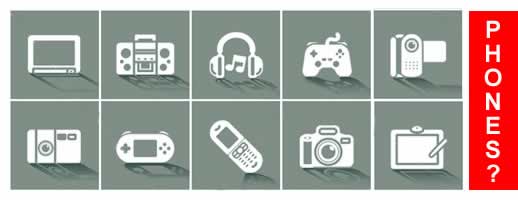A recent TV commercial has the new CEO of Sprint holding up the latest cell and saying one simple and true line, “It’s amazing we still call them phones.” It’s a black and white ad, set in the Empire Diner in New York City. He then says that technology is useless if you don’t know if it is there or know how to use it. This is an excellent product commercial and points out something so obvious that many of us forget how true it is.
Many of us who are technology fans, and who use the latest gear, gewgaws, widgets, and software in out everyday business and lives, sometimes don’t realize that the majority of people out there are unaware of all this tech, how to get it, how to use it. What does this mean? It means a plethora of potential customers and presents a challenge about how to reach them, how to let them know what’s available. For more information on these things please email me.
Ask yourself: how do I get information about my product or service to the millions of people across the globe that have never heard of the brand, but may want to purchase or use it, or even need it? A current trend, such as Google AdWords, placing ads in video games, and niche microsites targeting niche consumers, has proven to be effective, and will continue its use into 2009, with creative, innovative approaches to come.
Let’s go back to, “It’s amazing we still call them phones.” Isn’t it? What features does your new “cell phone” have, or have you kept the same one for the past five years? Middle school children now carry in their back pockets the basic technology that, twenty years ago, would have to filled an entire room of machinery, wires, and monitors. Perhaps these devices will later be called “Personal Production Studios” (PPS) or “Portable Media Units” (PMU)—the term PDA (Personal Digital Assistant) has gone the way of the Apple Newton. Today’s “phone” takes photos, makes movies, holds gigabytes of music, have GPS systems, talk to you, sing to you, is your best friend on a gloomy day. The National Endowment of the Humanities has recently announced grants for the development and production of documentaries and narrative films shot exclusively on cell phones or digital cameras; in Japan, the popularity of the “cell phone novel” (novels composed while on the subway to and from work and school) had thousands of hip, young Japanese consumers composing narratives in every possible pubic place. Start-up media companies are exploring and taking advantages to these alternative approaches from spending vast amounts of money on studio time and equipment. “The Camera Phone” has become a useful tool for today’s journalists and eye witnesses to crimes, the images used on broadcast TV and as evidence in court. The list can go on…you get the point.
Right now, for $1,000, you can record a band, broadcast an event or edit a film anywhere with a laptop loaded with software and a wi-fi connection. In five years, you might be able to do that with a “phone”: record a band, broadcast an event, make a documentary of the album, upload it to a production service such as CreateSpace or Lulu, and have CDs, DVDs, and distribution ready within days.
So think of this: where will your company, product, brand, and service be in this future? How can your company get involved, or make use or it to increase sales and grab more consumers? The time to think about the technology five years from now was yesterday.
Want to talk about these possibilities? We’re here and we’re happy to discuss these issues with you. All you have to do is pick up your “phone” and call.

